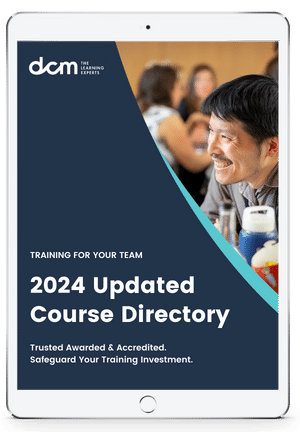When it comes to writing a resume, there a few rules everyone is familiar with — avoid typos, and don’t lie. But many applicants skip over crucial opportunities to show attention to detail, like choosing the perfect font.
“Font choice is another way to present yourself to the recruiter and hiring manager,” says Bryan Chaney, director of employer brand and talent attraction at Indeed.
And research shows that font influences how readers perceive a message. Jason Hanold, who has spent more than 25 years reviewing resumes in his career in talent acquisition, says he wishes people paid more careful attention to their resumes and the fonts they use.
Your average worker knows to avoid using Comic Sans, but beyond that, choosing the right typeface for your resume can be tricky. CNBC Make It asked several typographers and graphic designers to tell us the best fonts to use on a resume, and the ones listed here are all available in Microsoft Word or Google Docs.
Here are five fonts typographers and designers say will boost your chances of landing an interview:
1. Georgia
Four of the eight experts interviewed identify Georgia as a great font to use on a resume.
“Georgia has the classic serif elements similar to Times New Roman, except with a more modern feel,” says Garett Southerton, brand designer and consultant at Garett Creative.
“It stands a part as a sleeker, classier look for your resume,” he says.
Alison Wenlock, founder of Forth&Co. Design Studio, says it’s “an elegant typeface” designed to be read at small sizes, which makes it a good option for a resume.
2. Gill Sans and Gill Sans Light
Jean François Porchez has designed custom fonts for Beyonce and top print newspapers around the world and recommends the Gill Sans family.
Porchez describes Gill Sans as “classic” and “classy,” adding that “Gill Sans was successfully used by Emmanuel Macron for his presidential campaign.”

These fonts give your resume a “modern” and “clean” look according to Polly Buckland, managing director of The Typeface Group, though she cautions that when used in bold, it “can look a little chunky.”
3. Calibri
Five out of eight respondents cited Calibri as a safe option to use. However, some said that since it’s the default typeface for Windows users, it risks communicating to a recruiter that you didn’t make too much effort.
Calibri is “a classic, safe” font, says Buckland. “If you go with this, I’d suggest playing with the size and weight of the font as well as using a variety of words in caps and lowercase to add visual interest and to highlight important sections.”

If you’re drawn to Calibri but want to stand out, Porchez recommends opting for Corbel, which isn’t used as often.
4. Merriweather
“This font is a classic look with a modern twist, and extremely appealing to read because it’s super easy on the eyes,” says Southerton.
Jason Pamental, designer, strategist and teacher agrees, calling it “extremely readable.”

Both designers also like Merriweather Sans, which is available for free download on Google Fonts if you use Google Drive.
“Consider using the Sans for headings, and regular Merriweather for the rest of the text,” Pamental adds.
In addition to the top five, here are a few others that received nods from our panel:
Franklin Gothic
Wenlock calls it clean and modern in appearance. “This typeface keeps your resume looking polished and professional, while still adding some personality,” she says.
Verdana
“If you’re going for the most classic and clean look, but don’t want to risk looking the same as everyone else,” Southerton says, “Verdana is your choice.”
Cambria
″[It is] a highly readable serif typeface — this is a modern version of the often overused Times New Roman,” Wenlock says. “It has a bit of charisma and is a little more ‘friendly’ compared to some other serif typefaces.”
Corbel
Porchez, as mentioned, recommends Corbel as a more creative alternative to Calibri. He calls it “ultra legible” and a font that adds a “nice unique tone.”
A final tip:

Most importantly, be sure to choose a font you like for your resume, one that reflects your personality and style.
“Because fonts are a foundational nuance factor in a resume,” Hanold says, “you can leverage the right font to your benefit.”
Source: cnbc.com
Inhouse Tailored Training for Your Team
We provide training programs that are developed by industry, for industry. Our range of programs can be delivered in a way that suits the needs of your business to offer your employees learning that is accessible and flexible.
We add value to your business by providing specialised, flexible and scalable training that meets your training needs. As your workforce grows and evolves, our globally certified and industry-validated learning solutions can assess, train and qualify your employees. For more information on how we can help please visit the in-house training page.
Membership, Stay Connected. Stay Relevant.
Completing a program is a point-in-time exercise that delivers huge value, but there is a next step to maintaining the currency of your skills in the ever-evolving professional world.
Membership is the next step.
A unique platform, membership is designed to ensure that you are in tune and up-to-date with the latest tools, trends and developments. Being a member provides just-in-time training and continuous professional development, and an exclusive and evolving content library informed by subject matter experts and industry leaders.










